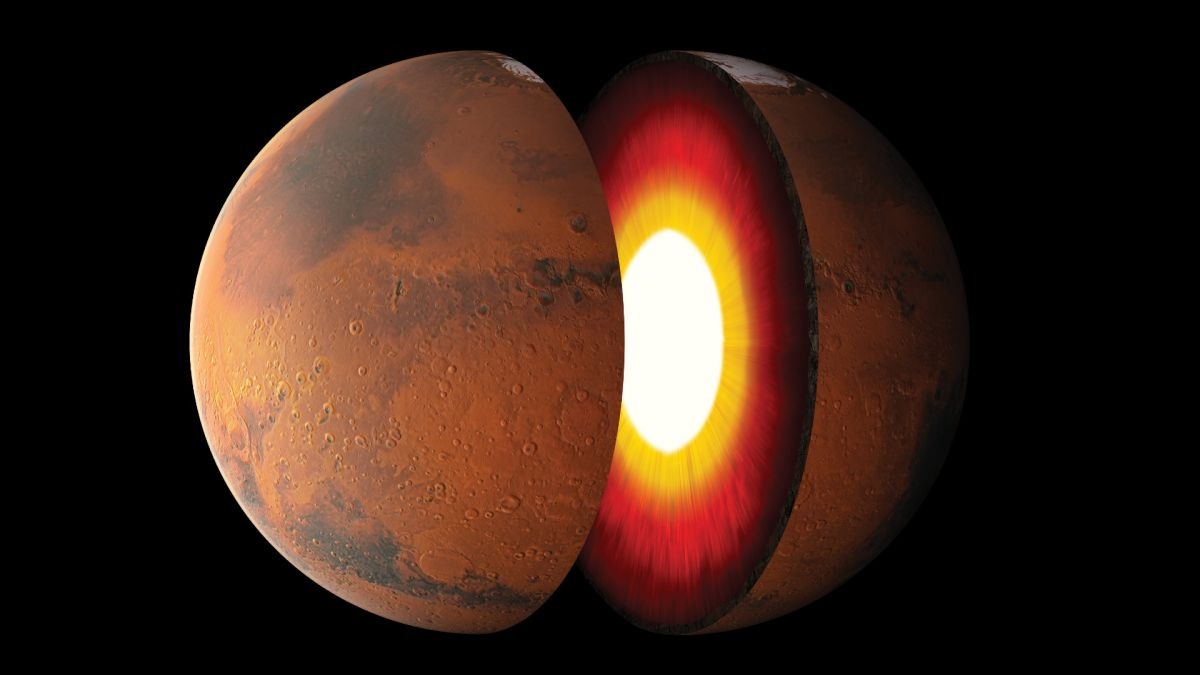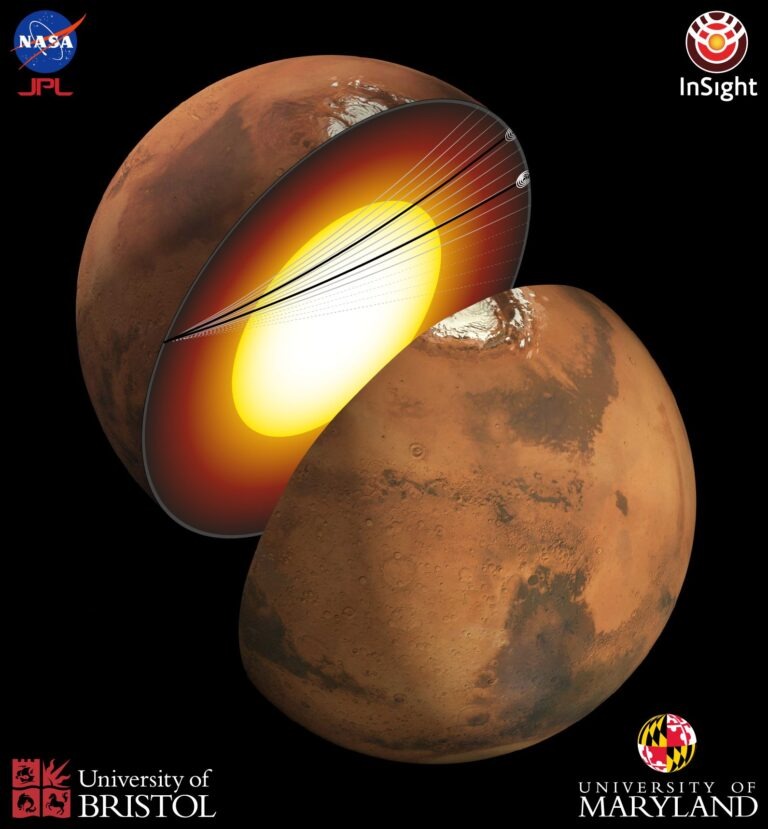Analyzing data from the decommissioned InSight lander, scientists discovered seismic waves from two signals that passed through the core of the planet: one from the Mars earthquake, and the other from the fall of a meteorite from the other side of Mars. According to seismic data, the center of Mars is a liquid alloy of iron with a surprisingly large amount of sulfur and oxygen. The team’s research is published today in the Proceedings of the National Academy of Sciences.

Unlike the core of the Earth, which has a liquid outer core and a solid inner core, the core of Mars turns out to be completely liquid. Approximately one fifth of the weight of the Red Planet’s core is a large proportion of lighter elements, mainly sulfur, with less oxygen, carbon and hydrogen. This is much larger than that of Earth, which gives a hint of why our planet has become alive, and Mars has turned into a dead and dry desert. The new study also revealed that the Red Planet’s core is actually slightly denser and smaller with a radius of about 1,800 km.

“The uniqueness of the Earth’s core allows it to generate a magnetic field that protects us from solar winds, allowing us to retain water. The core of Mars does not create this protective shield, so the conditions on the planet’s surface are hostile to life,” explained Nicholas Schmerr, a geologist from the University of Maryland and co-author of the article.
This information can help to improve our ability to search for life outside the Solar System. Mars and Earth are similar in many ways. Studying how they differ and why can help scientists narrow down the definition of which alien worlds are most likely to have life.
InSight stopped responding to NASA requests in December after years of Martian dust accumulated on its solar panels, leaving the spacecraft without power. It landed on the planet in November 2018. The mission lasted twice as long as NASA scientists had planned. During its stay on the surface of Mars, InSight has detected more than 1,300 earthquakes using its seismometer.
Earlier we reported on how NASA InSight experienced four powerful impacts from meteorites on Mars.
Follow us on Twitter to get the most interesting space news in time
https://twitter.com/ust_magazine
